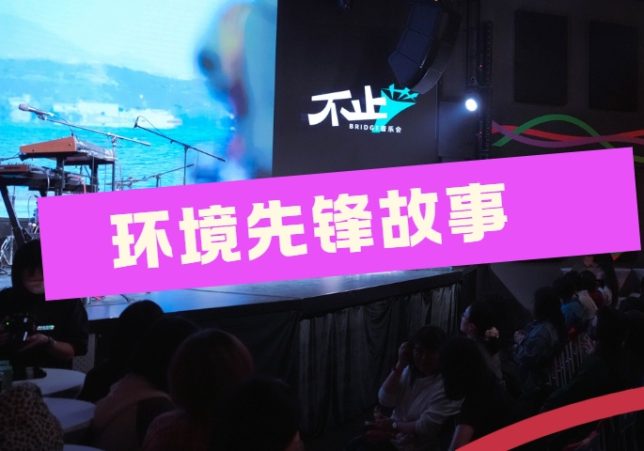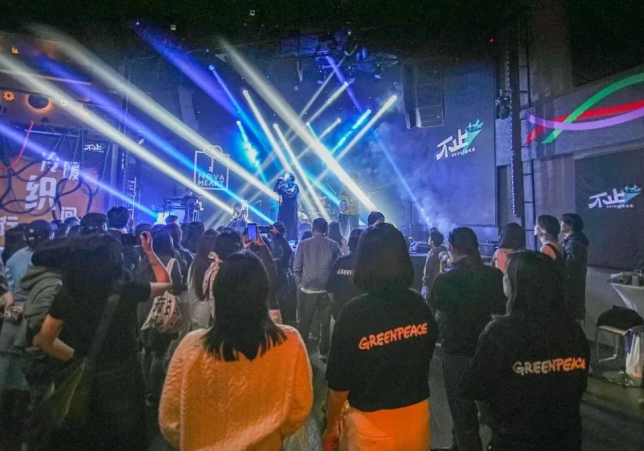‘Sea Salt as an Indicator of Seawater MP Pollution’ Factsheet
海盐作为海水微塑料污染指标的概况
Summary
A recent study “Global Pattern of Microplastics (MPs) in Commercial Food-Grade Salts: Sea Salt as an Indicator of Seawater MP Pollution” co-designed by Professor Kim, Seung-Kyu at Incheon University and Greenpeace East Asia found positive correlations between microplastics in seawater and microplastics in sea salts which people consume everyday. It is a global pattern that the sea salt containing higher microplastic numbers were mostly located at coasts polluted by microplastics. Greenpeace is urging corporations around the world to reduce and eventually phase out single-use plastics.
概要
最近,一项由仁川国立大学金宋柳教授和绿色和平东亚分部联合设计的研究“商用食品级盐中微塑料的全球模式:海盐作为海水微塑料污染的指标”发现,海水中的微塑料污染程度与人们每天消费的海盐中的微塑料之间存在正相关关系,这已成为一种全球型态,即含有较高数量微塑料的海盐大多产自受微塑料污染的沿海地区。绿色和平敦促世界各地的企业减少并最终淘汰一次性塑料的使用。
Definition of Microplastics
Microplastics are small plastic pieces less than five millimeters long which come from a variety of sources of plastics. Primary microplastics are tiny pieces of manufactured plastic including microbeads. And secondary microplastics are created from larger plastic debris that degrades into smaller pieces. Microplastics can be harmful to our ocean, aquatic life and human health.[1]
塑料微粒的定义
微塑料是指长度小于5毫米的微小塑料,来源广泛,形态各异。初级微塑料是微小的塑料制品,包括化妆品中的微珠。次级微塑料是从较大的塑料垃圾产生的,也就是塑料垃圾进入环境降解成更小的塑料碎片和颗粒。微塑料对我们的海洋、水生生物和人类健康可能造成损害1。
Global implications of this research
- Building on earlier studies of microplastic pollution in salt, this research is the first study of its kind in terms of scale and approach that looks at contaminant levels of a geographical spread of sea salt, and its correlation with environmental discharge and pollution levels of plastics.
- Total 39 different salt brands produced at geospatially different sites were investigated. Based on raw material and production location, the sampled salt products consist of 28 sea salts from 16 countries/regions, 9 rock salts from 8 countries/regions, and 2 lake salts from two countries/regions.
- 28 sea salt brands produced from 16 countries/regions of six continents.
这项研究的全球影响力
- 这项研究建立在以往对食盐中微塑料污染的研究基础上,第一次在全球范围内对海盐的微塑料污染情况进行了比对,并且找到了海盐中的微塑料含量及其周围环境中的塑料污染浓度的关联性。
- 该研究对不同地域生产的39个食盐品牌进行了调查。根据原料和产地,抽样调查了16个国家/地区的28种海盐、8个国家/地区的9种岩盐和2个国家/地区的2种湖盐。
- 其中的28个海盐品牌,分别产自6个大洲的16个国家/地区。
Global distribution of sea salt microplastics as an indicator of seawater plastic pollution
- Among 39 different salt brands, A wide range of microplastics contents was found: zero – 1,674 n/kg (excluding one Indonesian outlier(IN-S1) of 13,629 n/kg) in sea salts, zero – 148 n/kg in rock salt, and 28 – 462 n/kg in lake salt.
- The samples of sea salt produced in Asia contained relatively higher microplastics content than those from other continents: 1,028±3,169 n/kg in Asian sea salt brands versus 39±9 n/kg in brands from other continents. While nine of the top 10 sea salts with higher microplastic contents were produced in Asian regions. No significant difference in microplastic content was observed between rock salts from Asia and the others.
- Amongst all, extremely high microplastics content was observed in one Indonesian sea salt(over 3,000 microplastic particles per 250 g sample), that suggests the sea salt can be an alternative compartment for seawater pollution monitoring. Indonesia is considered to be the second-largest plastic emitter to the ocean in the world after China mainland.
- When excluding Indonesian sea salt, 75.7% of total 3,879 particles were microplastics followed by unidentified particles (15.4%), natural polymers (7%), and mineral particles (1.9%).
- Only three brands of investigated salts –Taiwan(refined sea salt), China mainland(refined rock salt), France (unrefined sea salt produced by solar evaporation)– did not contain any microplastic particles in both replicate samples. All other salt samples contained microplastic particles.
- Abundance of microplastics in unrefined sea salts (n=25) exhibited significant linear correlations with plastic emissions via worldwide rivers as well as with microplastics pollution levels in surrounding sea waters in published literature.
- The results support not only that Asia is the hot spot of global plastic pollution as previous studies suggest, but also that sea salt can be a good indicator of the magnitude of microplastics pollution in the surrounding marine environment.
海盐微塑料全球分布作为海水塑料污染的指标
- 39个不同的食盐品牌普遍被发现含有微塑料:每公斤海盐中含微塑料0-1674个(其中不包括印度尼西亚微塑料含量异常高的海盐样本(IN-S1),每公斤海盐含13629个微塑料),岩盐每公斤微塑料含量在0-148 个,湖盐每公斤含量在28-462 个。
- 亚洲海盐样品的微塑料含量远高于其他地区的海盐:亚洲海盐品牌每公斤海盐的微塑料含量高达1028±3169个,其他地区海盐品牌则为39±9个。微塑料含量排名前10种海盐品牌中,有9种是在亚洲地区生产的,而亚洲岩盐与其他地区岩盐的微塑料含量则没有显著差异。
- 其中,在印度尼西亚的一种海盐中观察到极高的微塑料含量(每250克样品中有3000多个微塑料颗粒),而印度尼西亚被认为是世界上的第二大海洋塑料排放国。这也间接表明了海盐可以作为海水塑料污染监测的一个指标。
- 在排除了印尼海盐样本的情况下,被抽查的全部食盐样品中共发现3879个颗粒,其中7%是微塑料颗粒,其次是不明颗粒(15.4%)、天然聚合物(7%)和矿物颗粒(1.9%)。
- 只有三个被调查的食盐品牌样品不含有任何微塑料颗粒,包括一种精制海盐、一种精制岩盐、一种未精制日晒海盐。
- 本次研究对比了未精制海盐(n=25)的微塑料含量和往期研究中全球河流塑料污染排放量以及海水中的微塑料污染量,对比发现海盐的微塑料污染和海盐生产地区的塑料以及微塑料污染呈显著的线性正相关。这一结果不仅再次表明亚洲是全球塑料污染的重点地区,而且还显示了海盐可以很好地反映出周围海洋环境中微塑料污染的严重程度。
Difference from previous microplastics in salt studies
- This study gives a much broader insight than previous studies into the variation of microplastic levels in salts from different geographical regions, and how those may be influenced by regional differences in plastic pollution of the environment.
- This study compared 28 sea salt brands produced from geospatially different sites, i.e., 16 countries/regions of six continents, to reveal any relationship with marine plastic pollution. Also, rock and lake salts were also investigated for comparison.
与以前对于食盐中的微塑料的研究的不同之处
- 与以往的研究相比,这项研究首次从全球范围对比了不同地理区域食盐的微塑料含量,并且找到了海盐微塑料污染与当地环境的塑料污染的关联。
- 本研究比较了6个大洲16个国家/地区生产的28个海盐品牌,并且揭示了海盐的微塑料污染与海洋塑料污染的关系,同时也对岩盐和湖盐进行了对比研究。
Implication to human exposure
- The purpose of this research is not to reveal harmful effects of sea salt ingestion on the human body, but to identify linear correlations between abundance microplastics in sea salts, riverine plastic emissions and microplastic pollution levels in seawater. Through the exhibition, this research highlighted that fundamental preventive measures such as controlling environmental discharge of mismanaged plastics are required to limit human exposure to microplastics.
- Considering global mean salt-equivalent intake of 10.06 g/day, and assuming the average level of microplastics in salt determined in this investigation (including an Indonesian salt that had a particularly high level of MP), an average adult consumer of salts could take in almost 2,000 microplastics each year through salt alone. Even if we discount that highly contaminated sample, the average adult could still be consuming many hundreds of microplastics every year with their salt.
- Microplastics intakes can be largely different among different citizens in the same country/region dependent on which brand of salt they consume. Based on investigated salts, much higher exposures are expected for the consumers of salts produced in Asia.
- Microplastics are also ingested by humans via various pathways and salt ingestion might be a minor contributor, accounting for approximately 6% of total exposure.
人类健康风险
- 本研究的目的并不是揭示摄入海盐会危害人体健康,而是为了确认海盐中微塑料的含量与河流塑料排放量以及海水中微塑料污染水平之间的联系。研究结果强调,只有在源头采取预防措施,例如管控失控塑料垃圾,减少塑料垃圾进入环境,才可以降低人类摄入微塑料的机率。
- 如果以全球平均食盐摄入量计算,一个成年人每天摄入06克的盐,那么每个消费者每年可以通过食盐摄入近2000个微塑料颗粒。即使我们不考虑高度污染的样本,成人平均每年仍可能通过食盐摄入数百个微塑料颗粒。
- 同一或国家/地区不同消费者通过食盐摄入的微塑料的数量存在差异,很大程度上取决于他们所使用的食盐品牌。根据本次研究的食盐品牌估计,亚洲的消费者因为食盐摄入的微塑料数量会更多。
- 需要注意的是,人类也可能通过其他途径摄入微塑料,包括呼吸,饮水以及摄取其他食物,相比其他途径,通过食盐摄入的微塑料量仅约占总量的6%。
Greenpeace’s Demand
Due to corporations’ indiscriminate and unsustainable plastic production, low possibility of recycling and lack of regulations, plastic waste has polluted the global ocean and is affecting human health. Only 9% of the world’s plastic has been recycled and 79% remains in natural environment including ocean.[2] Greenpeace demands corporations to take responsibility for the life of its products and their potentially negative environmental and social impacts by committing to immediately reduce and ultimately moving towards a phase-out of single-use plastic packaging and items, rather than putting it on consumers.
绿色和平的诉求
由于企业不可持续的塑料生产,塑料回收利用率很低,并且缺乏应对塑料污染的政策法规,塑料垃圾已经污染了全球海洋,并且正在影响人类健康。目前全球只有9%的塑料被回收利用,而79%的塑料仍然留存在包括海洋在内的自然环境中2。绿色和平要求企业负起社会责任,承诺立即减少并最终逐步淘汰一次性的塑料包装和物品,而不是将责任和减塑的负担转嫁到消费者身上。
文章注释:
[1] National Ocean Service. https://oceanservice.noaa.gov/facts/microplastics.html
[2] Science Advances. http://advances.sciencemag.org/content/3/7/e1700782.full





